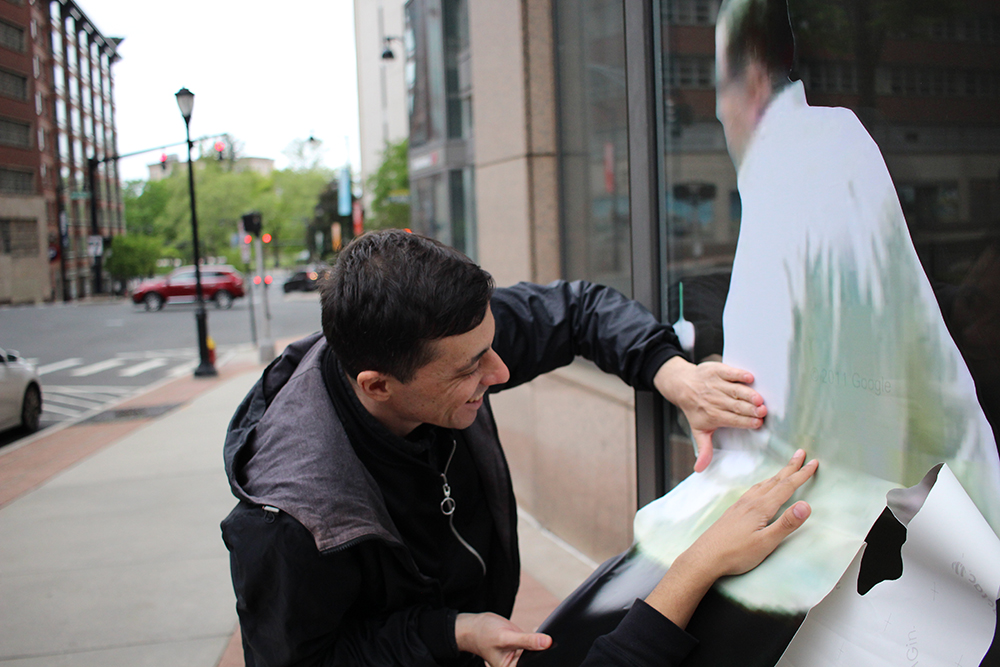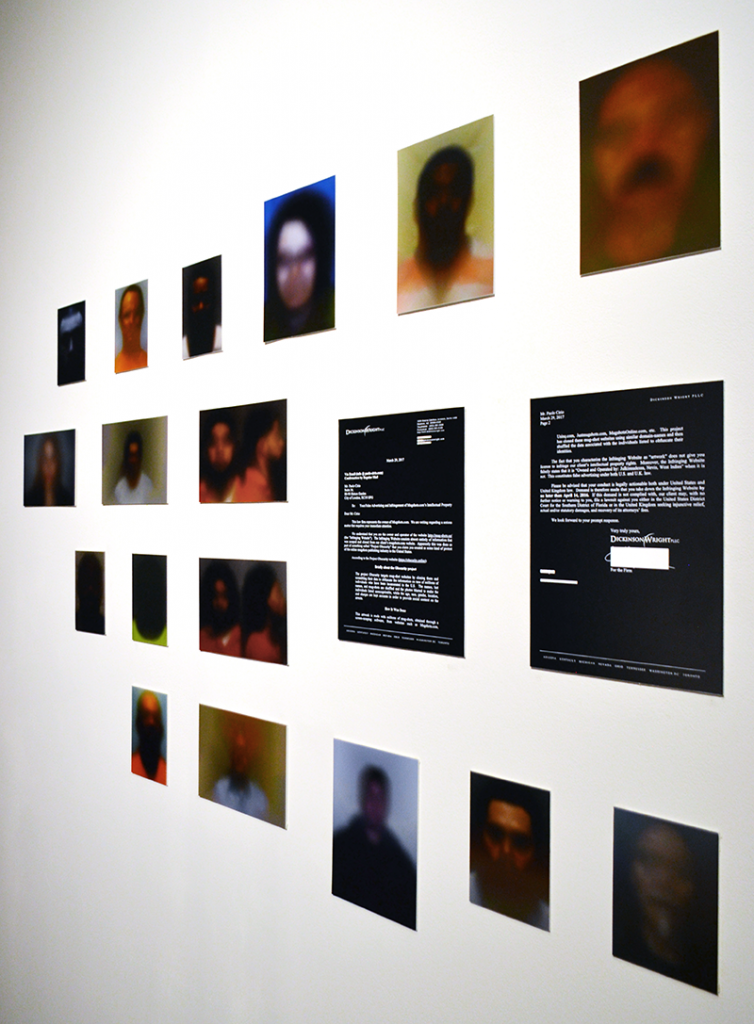November 2022 | Volume 24 No. 1
Cover Story
Art for Our Sake
In 2012, American artist Heather Dewey-Hagborg unveiled a new project, Stranger Visions, consisting of portraits derived from people’s DNA that she had extracted from detritus collected from the street – cigarette butts, lollipop sticks, strands of hair and the like. She had learned to process the DNA herself through an extension class at a community laboratory; she fed the results into a program that matched genetic code with observable traits, ultimately realising 3D printed portraits of strangers derived from their genetic footprint.
That same year, New York-based Italian artist Paolo Cirio initiated Street Ghosts, a project which involved gluing printouts of people from Google Street View onto sidewalks and buildings around the world. Later, he created Obscurity, comprising clones of for-profit mugshot websites which collect publicly available arrest photos and records and charge for both access to and removal of the information. He also released Capture in 2020, a database and public exhibition of the faces of 4,000 French police officers whose images were taken from publicly sourced photos.
What these works have in common is their attempt to wrestle with the disruptions created by new technologies. Dr Monica Lee Steinberg, Assistant Professor in American Studies, has been studying the phenomenon.
“These artists are activating existing technologies and legal loopholes to expose how they work,” she said. “The artworks demonstrate how personal information is neither private nor protected. They demonstrate facets of surveillance capitalism and how our personal information is being brokered with almost no regulation.”

In the Street Ghosts project initiated by Italian artist Paolo Cirio, photos of people found on Google Street View are printed and posted at the same physical locations where the photos were taken.
(Courtesy of Paolo Cirio)
A condition of convenience
The works also draw unsettling attention to an area that they do not transgress, at least in the United States and France where they have been shown, which is privacy law. Dr Steinberg uses the term “extralegal portraiture” to describe them.
“Extralegal portraiture demonstrates the more insidious potential of emerging technologies. It leaves viewers both curious and suspicious and it changes our interaction with society more broadly,” she said.
Capture, for instance, turns our usual idea of surveillance on its head – pointing the camera at the police and spotlighting the power dynamics between law enforcement and citizenry. Obscurity shines a light on those who extract personal data for exploitative purposes. Stranger Visions reveals how disturbingly easy it is to conduct bio-surveillance. Along the way, the artists made special efforts to generate news coverage, thus encouraging public awareness and caution.
“If an artist who took an extension class at a community laboratory is able to test the DNA of strangers, what might someone else – perhaps someone less bound by ethical concerns – realise in the coming decades and alongside rapidly advancing forensic and facial recognition technologies?” Dr Steinberg asked.
“The problems highlighted by extralegal portraiture are exclusive neither to surveillance nor art – they are the very condition of existing within the world of convenience.”

Paolo Cirio initiated the Obscurity project and cloned major mugshot websites and scrambled their data to obfuscate the arrestees’ records.
(Courtesy of Paolo Cirio)
Imagining value into existence
The art world’s embrace of another technology, non-fungible tokens (NFTs), has also been a disruptive force, sometimes for the better because it enables artists to earn future royalties from their works, but also in a more uncomfortable way because it exposes how we attach value to objects.
NFTs are smart contracts which can help establish provenance and verify authenticity. Since property ownership is generally asserted through the right of exclusion, what does it mean to own an NFT if the associated artwork is already online, and anyone can view it? Artist Damien Hirst poked fun at this concept recently with his 2021 work, The Currency, for which he created tokens associated with 10,000 dot paintings and sold each NFT for US$2,000. He gave buyers two options: after one year, they could either keep the physical manifestation of the artwork or the token, but they could not keep both. About half of buyers opted for the NFTs and this fall he intends to burn the real paintings. Those who opted for the tangible paintings had their NFTs deleted.
“Without the NFT, it is difficult to confirm whether the physical manifestation of the artwork is authentic. But if the physical manifestation of the artwork is destroyed, there is only proof of ownership,” Dr Steinberg said.
“Value is about trust, but what happens when people realise that anyone can imagine value into existence? Hirst is activating mechanisms that already exist to expose how they work and how art in the 21st century is being financialised.”
The thread uniting these works is the pervasiveness of digital technology in our lives. “All of these artists are creating a user-friendly means of demonstrating the problematic issues behind these technologies. At the same time, they are pulling pranks and making fun of the art world in creative and unexpected ways,” she said.
If an artist who took an extension class at a community laboratory is able to test the DNA of strangers, what might someone else – perhaps someone less bound by ethical concerns – realise in the coming decades?

DR MONICA LEE STEINBERG

